As a marketer, you understand the importance of an effective inbound marketing strategy. It is key to attracting and converting customers.
Email marketing is one of the most powerful tools in any marketer’s arsenal.
A Litmus survey data reveals that email marketing offers a massive average return on investment (ROI) of $36 for every $1 spent.
But how can email marketing fuel your overall inbound strategy?
In this post, we’ll talk about what email marketing is, the importance of email marketing, and the key components of an email marketing campaign.
Additionally, we will look into what inbound marketing is and the nine proven ways email marketing powers inbound strategy.
Let’s get to it.
The world of email marketing
Email marketing is one of the long-standing forms of digital marketing. It remains a mainstay for businesses seeking effective customer connections.
The definition of marketing
Email marketing is an owned digital marketing channel that involves sending targeted promotional messages to subscribers via email.
Emails are versatile communication tools that can be used for various purposes.
Here’s a list of what you can use emails for:
- Sending newsletters and promotional content to customers
- Announcing product launches or updates
- Addressing customer inquiries and resolving issues
- Highlighting special promotions, discounts, or sales
- Sharing relevant and interesting content to keep subscribers engaged
- Inviting subscribers to webinars, workshops, or other events
- Welcoming new subscribers or customers
The importance of email marketing
Email marketing’s primary importance lies in its ability to build and nurture customer relationships. Other importance include:
- Direct communication: Email marketing facilitates one-to-one communication by allowing direct access to the recipient’s inbox. 55% of customers find it to be the preferable method for maintaining business communication with their favorite brands.
- Cost-effectiveness: Email marketing is cost-effective compared to paid ads and other marketing channels.
Sending emails to a large audience incurs minimal costs. This makes it an attractive option for businesses of all sizes.
Critical components of a successful email marketing campaign
Email marketing can be a powerful tool to achieve your business goals—the secret lies in having a well-planned and executed killer email marketing campaign.
A successful email marketing campaign consists of several key components.
1. Strategic Planning
Experts say email marketing is an unmatched investment in connecting with your customers. But that exceptional ROI can only be achieved by strategic planning.
It all begins with setting the right goals for your inbound email marketing campaigns. Is it to bring new leads, promote your products, or want to boost brand awareness?
As you can see from the graph below, you can have multiple objectives for your email marketing campaign.
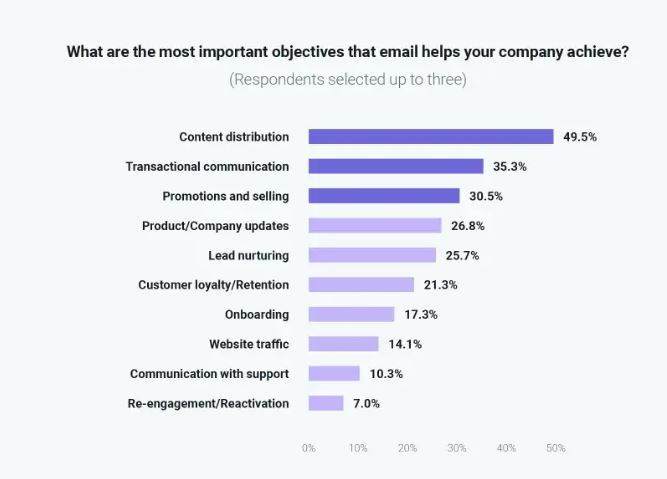
Image via Mailjet
Once the goals are set, you can plan every campaign stage and lay out the road map to execute it.
The planning should cover everything from design to content, the desired outcome, and email automation.
2. Compelling Content
The content of your emails captivates readers and compels them to take action.
Your content should highlight the solutions you provide to address customer needs.
An email copy with the right text balance and rich visual content like images, graphics, or videos can instantly capture attention.
Clear call-to-action buttons then direct customers to take the needed action.
Let’s take this email by Moment Botanical Water as an example. It features a clear copy that renders enough information to convince the reader.
The imagery of the product with the main ingredients in the beverage makes the email more compelling.
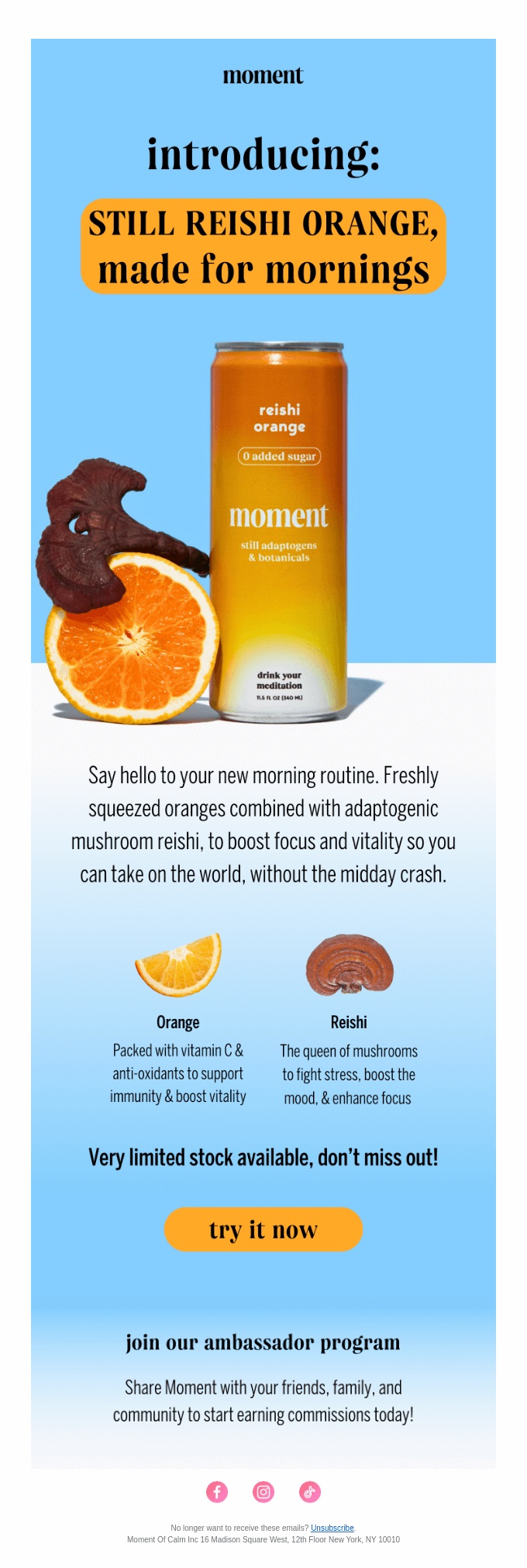
Image via Really Good Emails
3. Segmentation and Targeting
The days of one-size-fits-all email blasts are a thing of the past. Customers today demand relevant and tailored content based on their needs and interests.
To accommodate these diverse needs, you need to segment your email lists. Segmentation should consider demographics, behavior, lifecycle stage, and other factors.
Here’s an example of how you can group an email list into different segments for targeted messages. See how the various factors create and define the segments.
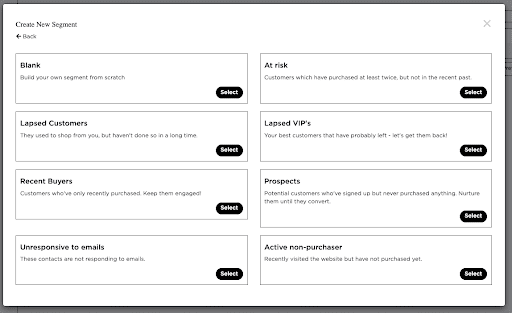
Image via Remarkety
Targeted emails with personalized content resonate more with each audience segment.
4. Effective Design and Layout
The design and layout of your emails can impact your email campaigns. Make sure your emails look appealing and work well on different devices.
Use multimedia components, color schemes, and font selections to direct the reader’s attention.
A simple, eye-catching design carrying a clear message can increase readership.
Let’s take this email from Methodical Coffee as an example. Do you notice how the design carries a clear message?

Image via Really Good Emails
It is also essential to use clear headers to increase readability and engagement. Write concise copy with a logical content flow.
5. Monitoring and Optimization
Inbound email marketing doesn’t end once you launch the campaign. Monitoring the performance of your emails is crucial for ongoing success.
Track key metrics such as open rates, click-through rates, and conversion rates.
See other inbound marketing email key performance indicators. You can track them to determine the success of your campaign.
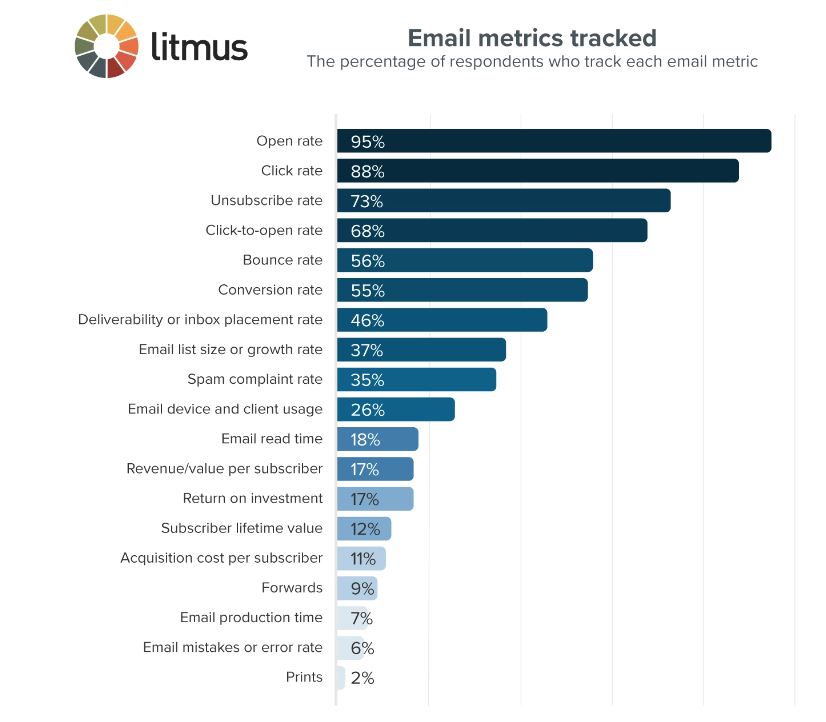
Image via Litmus
Rework or remove low-performing emails from the campaign. Analyze high-performing emails to identify successful elements for application in future emails.
What is inbound marketing?
Inbound marketing represents a digital marketing approach primarily focused on tactics like digital content marketing, SEO, email, and social media strategies. It aims to increase brand awareness, encourage people to visit your website for information, foster interest in your products, and ultimately lead to potential purchases.
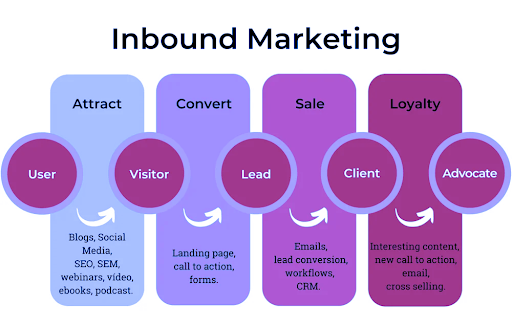
Instead of interrupting potential customers with ads, inbound marketing seeks their attention. Marketers achieve this through the publication of valuable content. This helpful content then leads to natural, unforced interactions and conversion.
Key components of inbound marketing include:
- Content Creation: Producing high-quality and relevant content, such as blog posts, articles, videos, and podcasts. These contents address the interests and challenges of your target audience.
- Search Engine Optimization (SEO): Optimizing the online content to make it easily discoverable by search engines. Good content optimization guarantees potential customers can find your information when searching for related topics.
- Social Media Marketing: Utilizing social media platforms to share and promote your content. You can engage with your audience and build a community around your brand.
- Email Marketing: Sending targeted and personalized emails to nurture leads.
- Landing Pages and Calls-to-Action (CTAs): Creating dedicated landing pages and compelling CTAs. This helps to capture leads and guide visitors through the conversion process.
The role of email marketing in inbound strategy
Inbound marketing aims to pull customers towards a brand and product. For that, email marketing plays an essential role in the success of inbound marketing strategy.
Inbound email marketing content encompasses a wide range of promotional and educational materials. Here are a few examples of inbound marketing email:
- Welcome email
- Newsletters
- Product updates and announcements
- Personalized recommendations
- Customer success stories
- Exclusive offers and promotions
- Re-engagement emails
Let’s look at how email marketing contributes to inbound marketing growth strategy.
- Content distribution: Inbound marketing relies heavily on valuable content creation. Email is an effective channel for distributing this content to the right audience segments.
- Sales: Email marketing has an impact on your business’s bottom line. Email campaigns, as well as email marketing automation, generate sales.
- Lead Nurturing: Email marketing is instrumental in nurturing leads throughout the buyer’s journey.
Well-designed email campaigns walk leads through targeted content based on their interests.
- Brand and product promotion: Strategic email campaigns can enhance brand awareness.
Regular email newsletters and promotions help highlight your products. They also keep your company at the forefront of subscribers’ minds.
By sharing helpful content, you build familiarity and trust in your brand.
Nine ways how email marketing can fuel your inbound strategy
Needless to say, you now know what email inbound marketing is. You also understand the key components of a successful email campaign.
Let’s look at how email marketing can fuel your overall inbound strategy.
Here are ten proven ways:
1. Lead generation
Lead generation is one of the top priorities in marketing campaigns. 46% of marketing professionals focus on email marketing to achieve lead generation priorities.
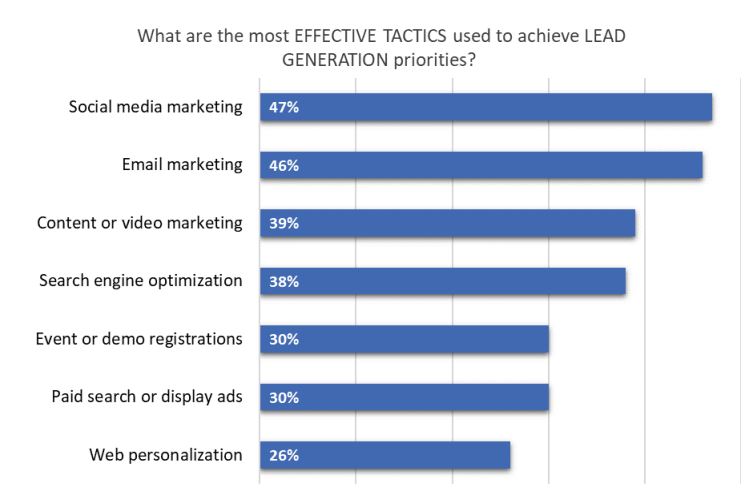
Image via Ascend2
You can use lead magnets, such as downloadable guides, whitepapers, or exclusive content. These incentives help entice your audience to subscribe to your email list.
This provides you with potential leads who have expressed interest in your brand. With this, you set the foundation for further engagement.
Nurturing leads via email with relevant content moves them through the sales funnel.
2. Nurturing customer relationships
Inbound marketing strategy thrives on attracting customers. Email marketing shines in this area. It excels, particularly through its potential for personalized communication.
You can use emails to send targeted and customized content based on their interests. Additionally, emails let you offer relevant recommendations.
This creates a sense of personal connection and makes your customers feel valued.
Satisfied customers are more likely to maintain their business with you. They are also more likely to expand their business with you.
3. Content distribution
Email is a key channel to promote your latest content, like blog posts, videos, and podcasts.
When you create high-quality content, email marketing gets it in front of the right people.
Readers who find your content valuable are more likely to share it, link to it, and cite it. This helps in expanding its reach and impact. It also boosts your authority and inbound traffic.
4. Automated workflows
Automation is a game-changer in email marketing. It is an effective way to guide your prospective customers through your sales funnel.
Automated workflows handle repetitive tasks like welcome series and abandoned cart reminders. It can also handle post-purchase follow-ups and other routine tasks.
This helps lighten your workload.
Creating sequences with a series of relevant emails keeps your contacts engaged. The actions taken by your subscribers trigger these sequences.
This also frees up your time to focus on strategy rather than manual sends.
For more about email marketing automation, check out our 15 unconventional email automation examples.
5. Exclusive offers and promotions
Email marketing provides a direct channel to promote exclusive offers, discounts, and promotions. This tactic incentivizes website visits. You can showcase your products or services and convert subscribers into customers.
Here are some tips for using exclusive offers and promotions. They can help fuel your inbound strategy and attract more customers:
- Segment your audience: Send varied offers. Tailor them to different email segments for higher relevance and engagement.
- Keep offers exclusive: Make sure your offers stand out. Make them exclusive, not accessible to everyone. Create a perception of value for your subscribers.
- Track and measure results: Track the performance of your email campaigns. Adjust your offers as needed. Optimize results for better effectiveness.
6. Customer onboarding
New clients need to undergo an onboarding process about your business. This helps them understand your offerings.
Email marketing allows you to guide them through this process. After someone signs up for your email list or makes a purchase, send a welcome email.
Do this immediately after the signup to start the relationship-building process early on.
Share valuable resources and explain what subscribers can expect from your emails. This paves the way for long-term engagement and helps prevent unsubscribes.

Image via Glossier
7. Social media integration
Integrating email and social media is a powerful inbound marketing strategy. This leverages the strengths of both channels to maximize reach and engagement.
One key aspect involves incorporating social buttons into your email campaigns so the readers can easily reach your social media channels and prolong the interaction with your brand. Let’s take this email from Tillamook as an example.
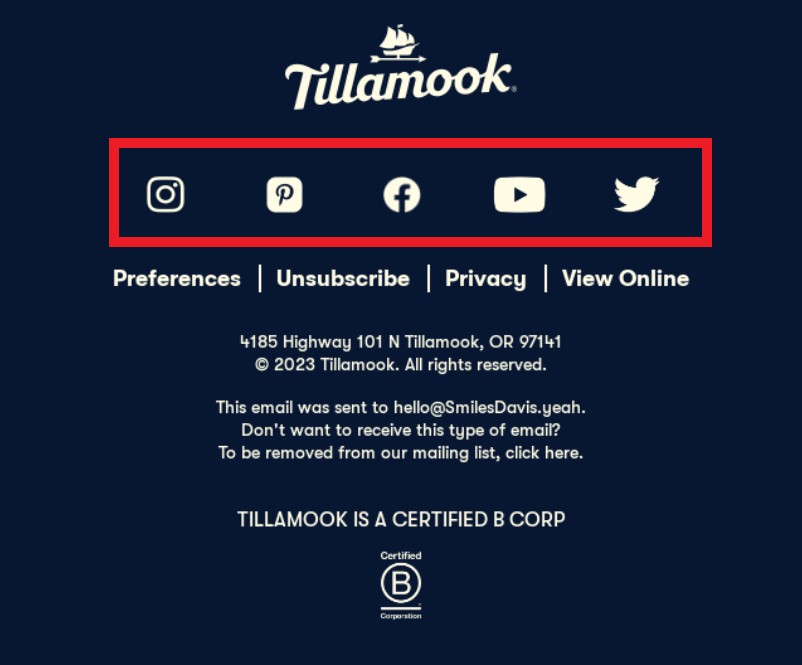
Image via Really Good Emails
This makes your content more discoverable and expands your reach.
You can also promote your email list on social media to attract new subscribers. The combination of email and social media amplifies your inbound marketing efforts.
8. Feedback and surveys
Emails are a valuable tool for obtaining feedback and insights. They help in refining your inbound marketing strategy.
Use surveys to ask subscribers about interests, pain points, and preferences. Based on the survey responses, determine and offer the most relevant content.
Here are some practical tips to maximize the use of emails for feedback and insights:
- Design surveys that are concise, clear, and engaging. Use a mix of open-ended queries and rating scales to gather diverse insights.
- Encourage survey participation by offering incentives such as discounts or exclusive content.
Let’s take this survey email from Lyft for example. The brand offered a $100 Amazon gift card to encourage customer participation.
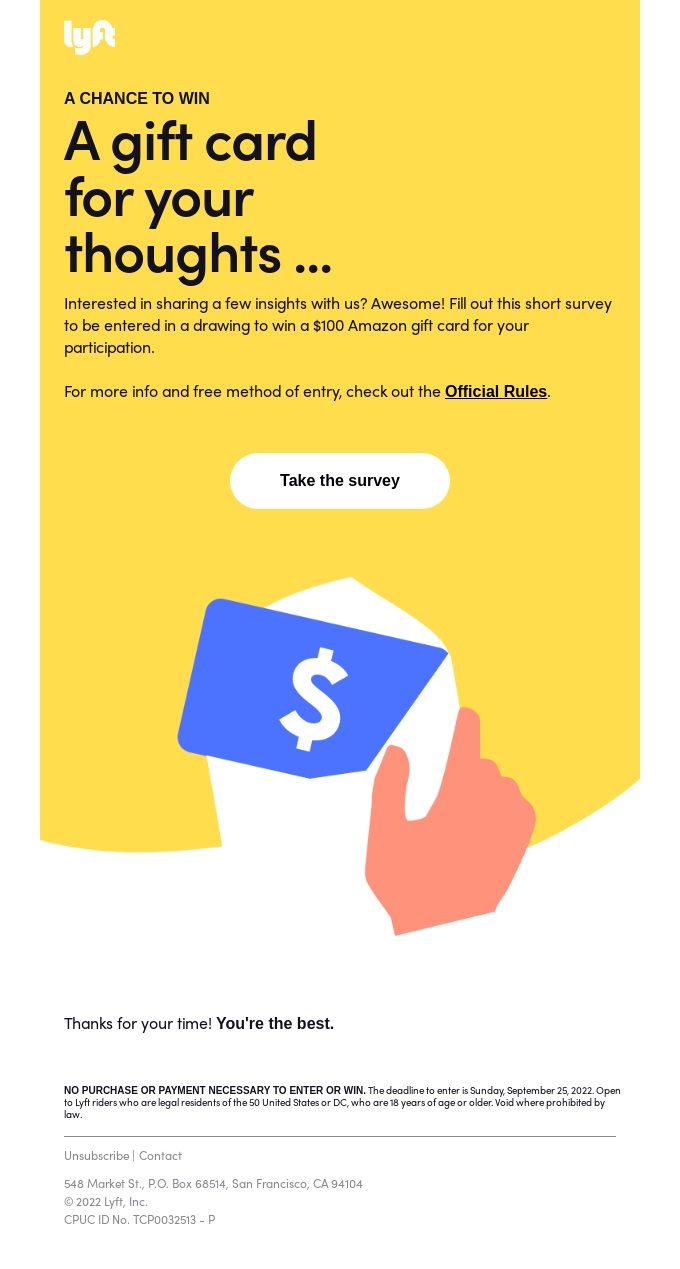
Image via Really Good Emails
- Time your survey emails to maximize participation. Avoid sending surveys during peak business hours when people might not likely respond.
- Tailor surveys and gather feedback that is relevant to specific groups.
9. Re-engagement campaign
Not every subscriber remains engaged over time. Run re-engagement email campaigns to win back inactive contacts and resurrect dead leads.
Send a series of emails. Include valuable content to re-engage contacts. Focus on those who haven’t opened or clicked in a while. Design emails with special offers, resources, or incentives to rekindle their interest.
Email open rates are over 45% for re-engagement campaigns. Thus, it is an effective way to recover lost opportunities and generate new interest.
How can email marketing fuel your overall inbound strategy: Wrap up
There you have it—a response to the ever-relevant question. How can email marketing fuel your overall inbound strategy?
This article explored nine tried-and-true ways to boost inbound strategy with email marketing.
When implemented, email marketing improves lead generation. It fosters meaningful relationships with your audience. Additionally, it increases website traffic. All these support your inbound marketing strategy.
To maximize your email campaign, experiment with different email content types. Make data-driven marketing decisions by optimizing and analyzing your email performance.
The bottom line is to maintain consistent communication with customers and leads.
